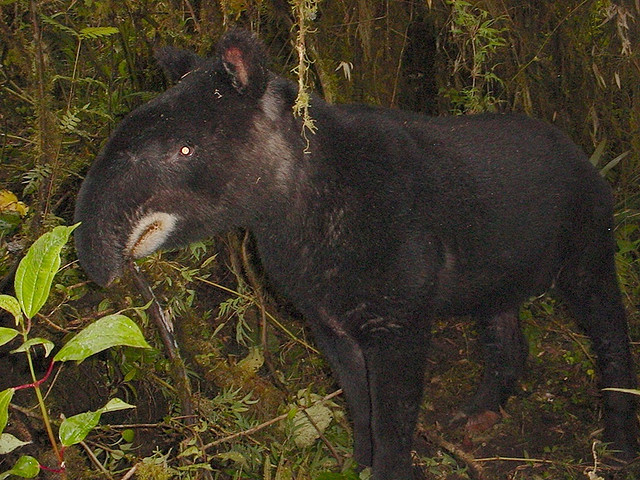Biodiversity
The Importance of Camera Traps
How Camera Traps are Revolutionizing Biodiversity Conservation
In the vast, wild places of our planet, a quiet revolution is happening. From the dense rainforests of the Amazon to the remote mountain ranges of Asia, biologist are deploying a simple and powerful tool that is changing the way we see and protect wildlife: the camera trap.
These are not average cameras. They are activated by motion and heat, and are designed to be left in the field for weeks or even months, capturing candid, undisturbed moments of animal life. Without a human in sight, these silent witnesses provide a priceless window into the secret world of biodiversity.
Here’s why camera traps have become such a critical tool for conservation:
1. They Reveal the Unseen
Many of the world’s most vulnerable species are also the most elusive. Nocturnal hunters, shy forest dwellers, and rare, solitary animals often go undetected by traditional survey methods. Camera traps excel at capturing these “ghosts” of the animal kingdom, providing irrefutable evidence of their presence. This has led to remarkable discoveries, including the first-ever photographs of species thought to be extinct.
2. They Provide a Clear Picture of Ecosystem Health
Beyond just finding a single animal, a network of camera traps can paint a comprehensive picture of an entire ecosystem. By analyzing the data: how many different species are present, their activity patterns, and their interactions, scientists can assess the health of a habitat. A high diversity of species, including top predators and preys, is a strong indicator of a thriving Ecosystem.
3. They Inform Conservation Strategies
Camera trap data is a goldmine of information. It helps conservationists answer key questions such as:
Where are animals moving? This helps identify crucial wildlife corridors that need to be protected.
What is a species’ population size? This is essential for monitoring endangered populations and evaluating the success of conservation efforts.
How are animals interacting with their environment and each other? This provides insight into predator-prey dynamics and competition for resources.
This information is not just interesting—it’s the foundation for effective, science and data-driven conservation strategies.
5. They Tell a Powerful Story
Finally, camera traps serve as a powerful tool for public outreach. The captivating images and videos of a mother Jaguar with her cubs, a majestic tiger, a tapir and baby can be shared on social media, presented in documentaries, and in educational programs. They help people feel a personal connection to wildlife, inspiring a sense of wonder and urgency to protect these magnificent creatures.
In a world facing a global biodiversity crisis, camera traps offer hope. They provide us with the evidence, insights, and inspiration we need to make informed decisions and ensure that the planet’s incredible wildlife will thrive for generations to come.
My Contribution
Early Works
My experience with camera traps dates back to the very first models—those that still relied on film and offered only 36 exposures. We’ve come a long way since then!
Despite the technological limitations, those early cameras were crucial. They allowed us to capture the first photographic records of the elusive mountain tapir (Tapirus pinchaque) and, using those images, we were able to describe their activity patterns. This pioneering work was published in the following article:
Lizcano DJ, and Cavelier J. 2000. Daily and seasonal activity of the mountain tapir (Tapirus pinchaque) in the Central Andes of Colombia. Journal of Zoology. 252(4):429-435. doi:10.1111/j.1469-7998.2000.tb01225.x.
A decade later, I had the opportunity to collaborate with the Tropical Ecology and Assessment Network (TEAM), utilizing data collected by Johana Hurtado in Costa Rica. This partnership resulted in the publication of an amazing work:
Ahumada JA, Hurtado J, Lizcano D. 2013. Monitoring the Status and Trends of Tropical Forest Terrestrial Vertebrate Communities from Camera Trap Data: A Tool for Conservation. PLoS ONE 8(9): e73707. doi:10.1371/journal.pone.0073707More Recently
More recently, I have focused my efforts on promoting the use of camera traps and their analytical methods within the Spanish-speaking community.
Andrade-Ponce G, Cepeda-Duque JC, Mandujano S, Velásquez-C KL, Gómez-Valencia B, y Lizcano DJ. 2021. Modelos De ocupación Para Datos De cámaras Trampa. Mammalogy Notes 7 (1), 200. doi:10.47603/mano.v7n1.200.
Lizcano DJ. 2018. Trampas cámara Como Herramienta Para Estudiar Mamíferos Silvestres. Mammalogy Notes 5 (1-2), 31-35. doi:10.47603/manovol5n1.31-35.
